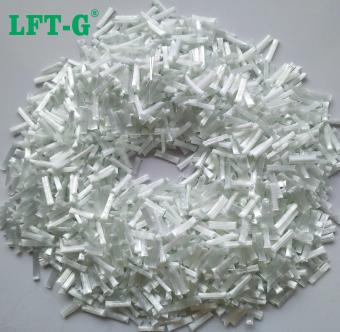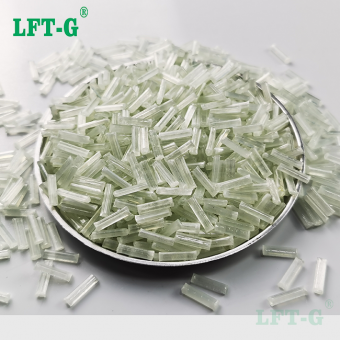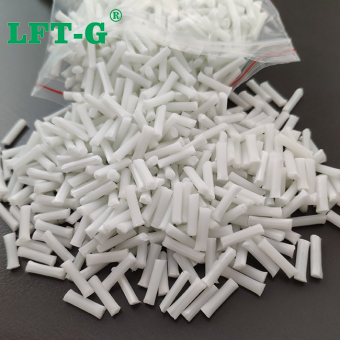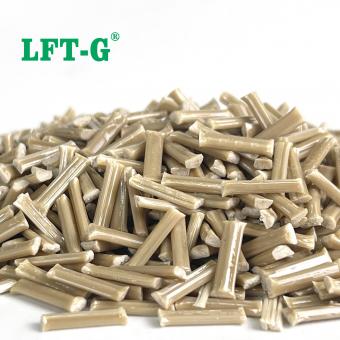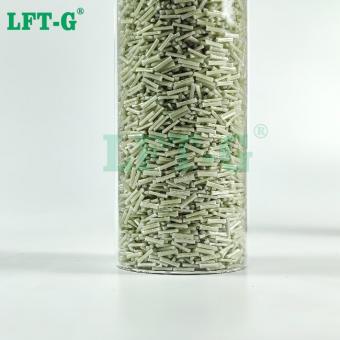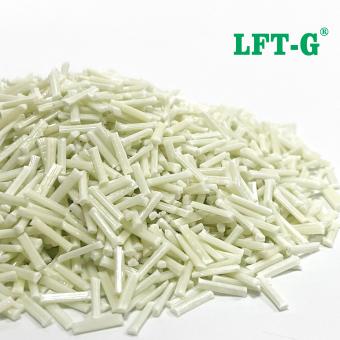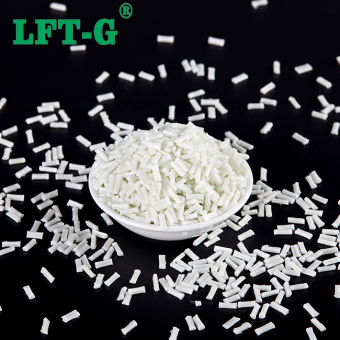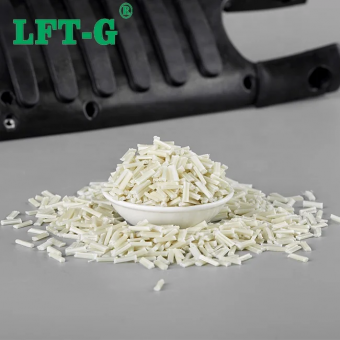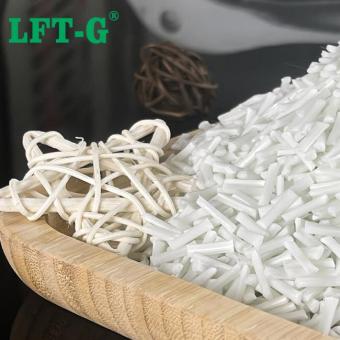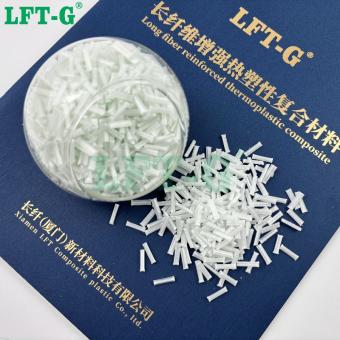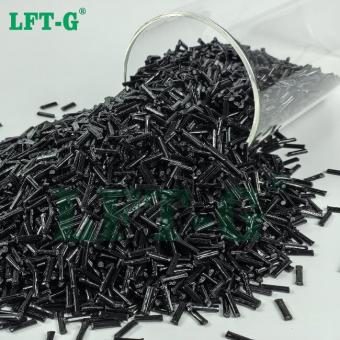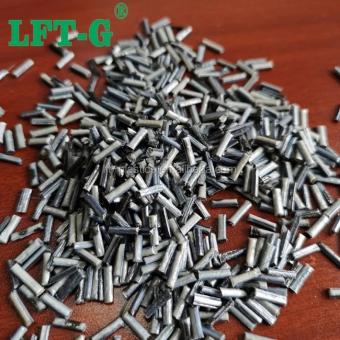-
LFT Long Glass Fiber Reinforced PLA Compounds Injection MoldingPolyphthalamide is a high-performance resin and member of the nylon family with exceptional thermal, mechanical, and physical properties. It is hygroscopic, opaque, semicrystalline, and can be used in plastic injection molding. Most PPA are filled with glass fiber or carbon fiber to enhance stiffness for high-temperature applications. As a result, PPA is often used in applications in place of metal or higher-priced thermoplastic.
- wholesale glass fiber reinforced plastic resin dispenser in china
- pla price per kg
- thermoplastic resin suppliers
- reinforced pla
- polylactic acid (pla) plastic
- pla pellets
Tags :
-
Xiamen LFT Thermoplastic Polyurethane TPU Long Glass Fiber filling composite industry productProduct number: TPU-NA-LGF Product fiber specificaion: 20%-60% Product features: High toughness, High toughness, Low water absorption, High dimensional stability, chemical resistance, good product appearance.
- Low water absorption price good
- footwear shoes uses
- Columnar particle safty plastic
- Natural color images sa
- Industrial supplies film automotive
- Sample available tpu 3d printing
Tags :
-
LFT-G modified ABS compounds Long Glass Fiber for automotive partsABS injection molding refers to the process of injecting molten ABS plastic into a mold at high pressures and temperatures. There are many ABS injection molding applications as it is a widely used plastic and can be found in the automotive, consumer product, and construction industries to name a few.
- ABS Long Glass Fiber Reinforced Polymer
- ABS long fiber reinforced
- lgf injection mold abs for engineering
- China manufacturer ABS GF fiber reinforced
- High-performance engineering plastic ABS composite
- Natural color abs materials with filler
Tags :
-
LFT Polyphenylene Sulfide PPS Manufacturer Glass Fiber filled Compounds engineeing use
- PPS thermoplastic resinforced material
- fiber filling polymer instead of metal steel
- Sample free natural plastic new GFRP
- engineering plastic structural parts
- modified resin good price low MOQ
- Car parts application bearings
Tags :
-
LFT China Manufacturer PPA Long Glass Fiber Reinforced PolymersPPA long glass fiber composites are high-performance thermoplastic materials that combine the durability and strength of glass fiber reinforcement with the superior properties of PPA engineering plastics, making them ideal for demanding industrial applications.
- PPA long glass fiber composite Polyphthalamide
- high-performance PPA polymer
- glass fiber reinforced thermoplastics
- PPA engineering plastic materials
- durable thermoplastic composites
- industrial PPA reinforced polymer
Tags :
-
High Temperature Resistant Nylon PPA with Filler Injection MoldingOur high-performance PPA (polyphthalamide) long glass fiber reinforced composite is engineered to deliver exceptional mechanical strength, thermal stability, and durability. Designed for demanding applications, this composite material offers a superior balance of stiffness, impact resistance, and processability. Ideal for automotive, electrical, and industrial applications, it sets a new benchmark in high-performance thermoplastic composites.
- ppa plastic price
- ppa gf30
- ppa plastic resin
- ppa compound
- ppa gf30 material properties
- China factory plastic supplier
Tags :
-
High rigidity and toughness Polyamide 12 filling long fiber compoundsPA12 PA12 polyamide or nylon 12 Chemical and physical properties of PA12 PA12 is a linear, semi-crystalline - crystalline thermoplastic material from butadiene. Its properties are similar to PA11, but its crystal structure is different. PA12 is a good electrical insulator and will not be affected by moisture as other polyamides. PA12 has good impact resistance mechanical and chemical stability. There are many improved varieties of PA12 in terms of plasticizing and reinforcing properties. Compared with PA6 and PA66, these materials have lower melting point and density, and have very high moisture recovery. PA12 has no resistance to strong oxidizing acids. The viscosity of PA12 depends mainly on humidity, temperature and storage time. PA12 It's very liquid. The shrinkage rate of PA12 is between 0.5% and 2%, depending on the variety of PA12 material, wall thickness and other process conditions. PA12 compounds plastic Nylon glass fiber material is a kind of composite material, adding glass fiber on the basis of the original nylon material, so that the material has the following characteristics: High temperature resistance, good dimensional stability, good toughness, good insulation, corrosion resistance, high mechanical strength. LGF & SGF comparison Compared with the short fiber, it has more excellent performance in mechanical properties. It is more suitable for large products and structural parts. It has 1-3 times higher (toughness) than short fiber, and the tensile strength (strength and rigidity) is increased by 0.5-1 times. Datasheet for reference Application ■ Power tools: cutting machine, electric saw, electric drill, Angle grinder, polishing machine, electric hammer, electric pick, hot air gun and other models; ■ Automotive industry: cooling chamber, intake manifold, frame bracket, ventilation grille, door handle, throttle body and other models; ■ Machinery industry: water pump, water valve, bearing, shaft sleeve, gear, bracket and other models; ■ Sports equipment: ski equipment, baby carriage, fitness equipment parts and other models; ■ Office equipment: seat bracket, pulley, rotating shaft, shredder gear, printer parts and other models. Certification Factory Why choose us
- composite panels for ev batteries
- reinforced polyamide plastic
- nylon 12 application
- nylon pa12
- pa12 gf20
Tags :
-
New Materials LGF Polyamide 66 Nylon for Structural ApplicationsOur PA66 Long Glass Fiber Reinforced Material is a high-performance thermoplastic composite developed for applications demanding superior mechanical strength, dimensional stability, and heat resistance. Ideal for metal replacement and high-load structural components.
- nylon pa66 gf30
- china supplier pa 66
- long fiber composites
- gfrp price per kg
- engineer nylon
- injection molding nylon
Tags :
-
LFT-G Polyamide6 nylon6 filling long glass fiber orginal color for automotive partsThe main advantages of nylon 6 are its stiffness and resistance to abrasion. Moreover, this material has excellent impact strength, wear resistance, and electrical insulating properties. Nylon 6 is a highly elastic and fatigue-resistant material, meaning it will return to its original proportions after being distorted by tension. This polyamide is non-toxic and can be combined with glass or carbon fibers to increase performance.
- Polyamide 6 composite properties
- lgf thermoplastic resin good price
- High impact PA6 instead metal plastic
- injection molding plastic gf30 filter
- pa6 filling long glass fiber customized
- Reinforced plastic lightweight compounds
Tags :
-
PP Composite Pellets with 20-60% Long Glass Fiber ContentLong glass fiber reinforced PP offers excellent impact resistance, lightweight strength, and dimensional stability, making it ideal for structural and automotive parts. The integration of long glass fibers greatly improves mechanical performance compared to standard polypropylene.
- pp fiber
- glass filled pp
- fiber glass companies
- fiber glass manufacturer
- glass fiber prepreg
- fiber glass density
Tags :
-
PLA Carbon FiberLFR-PLA can be processed using conventional plastic processing techniques like injection molding and extrusion, offering good adaptability in manufacturing. It is widely used in industries like automotive, consumer electronics, 3D printing, and eco-friendly packaging due to its combination of high performance and sustainability.
- pla carbon fiber
- pla carbon fiber filament
- carbon fiber pla filament
- carbon fiber reinforced polymer
- carbon compounds
Tags :
-
PEEK Carbon FiberPure PEEK itself is a special engineering plastic, with radiation resistance, self-lubrication, high temperature resistance, wear resistance, fatigue resistance and other characteristics. The performance of carbon fiber reinforced PEEK material has improved in many aspects compared with pure PEEK material.
- peek polymer
- carbon fiber polymer
- peek polymer properties
- carbon fiber reinforced polymer composites
- carbon fiber reinforced polymer structure
Tags :

 e-mail
e-mail English
English français
français Deutsch
Deutsch русский
русский italiano
italiano español
español português
português العربية
العربية 日本語
日本語 한국의
한국의 中文
中文












